Stratocaster Bass 2




This Strat bass is another of my early projects, an evolution of the first one. It uses basically the same neck, but mounted in the stock guitar neck pocket. This moves the bridge position adjacent to the old tremolo hole, but the expansive Mustang bridge plate covers it nicely. The pickguard looks stock, but is actually custom-made to cover the six stock bridge screw holes. If you can't get a Mustang bridge ( and you can't any more, ) you could extend the pickguard to cover all the guitar holes, or use a stock pickguard and just make a small bridge-sized cover. Or just leave the tremolo hole and keep your stash in it.
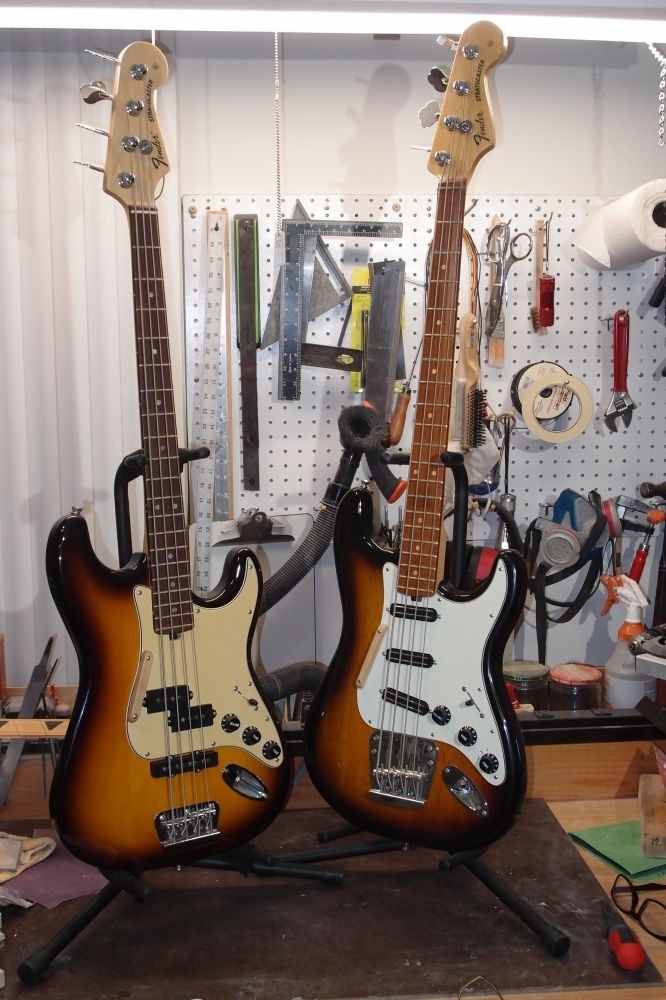
Two Stratocaster 30" bass conversions. On the left is the heaviest conversion - re-routed neck pocket, pickup in tremolo hole, bridge at end of body. On the right: Mustang bridge covering tremolo hole, standard Strat pickguard with rail humbuckers.

The neck is hand-picked Home Depot maple with a fretboard of some orange wood that looks like Bubinga, or could be anything, I don't remember and it really doesn't matter. The dot markers are maple that I made myself with a 1/4" plug cutter. Legend has it Fender cut dot markers from old bathroom floor tiles, you can use pretty much anything you want. The decals are the same as the first bass, you got two sets for the price in case you screw up, which I never, cough! This headstock shows some nice ambering compared to the first, and the finish has not drawn thin, so I'm guessing it is poly, not lacquer.
The pickups are actually thin-line guitar humbuckers. These work great on a bass with a narrow string spread, but are a bit too short to cover a full-sized spread at the bridge. These are 4-wire humbuckers, which gives a range of wiring options that are very useful on a guitar, but much less-so on a bass. Just wire the coils in series and leave it at that, and you will never know they weren't made for a bass, they sound great. But I didn't do that, the odd set of dots by the second tone knob are an indication of what it really is - a switch that selects series/parallel/single mode for all three pickups at once. I got clever, and made the single-coil combinations humbucking as well.
These turned out to be really great pickups for just about anything, I even put them in the 12-string, where single-coil mode jangles like a Ric! In bulk, they were about six dollars each, direct from China on eBay. You can probably still find them, but I doubt they are that cheap any more!
Always takes a long time get a one-off build dialed-in, and I am fussy to boot. You have nut, truss rod, neck shim, and bridge, all to sort out at once to get the best setup. And unlike a factory-produced model, where you are starting out from probably pretty close-by, with a one off, you are starting from nowhere. Turns out, the Mustang bridge is made for a much thinner body with a shallower neck pocket, so I had to shim the neck back a bit to compensate. I usually build up the shim out of layers of masking tape. At first I was a little miffed that such a thick shim was needed. That shouldn't be, did I screw up somewhere? But then I realized it was the bridge, those saddles are TALL. Wasn't necessary to shim with the Musicmaster bridge on the other bass, how I wish I could find another of those!
The spoke nut truss rod makes it easy to dial in just the right amount of neck bow, and then set the action at the bridge. ( Did I mention that the truss rod slides right out should it ever break? All truss rods should be that way. ) Turns out the brass nut can be very buzzy if you don't get the shape of the slots just right, and brass may be soft for a metal, but it still takes a lot more effort to file than plastic. To avoid buzzing, make the slot bottoms lean back just a bit, so the string departs from a sharp corner. Even the tiniest metal-to-metal gap will buzz.
Tone-wise, the 3-pickup has a nice range between the pickups and combinations, but not as pronounced as the 2-pickup, which is much more 'bassy' (ballsy?). Who is to say what a 3-pickup Strat bass should sound like? It can do an approximation of P or J, and that neck pickup can do Gibson mud pretty well, but overall it really just has its own sound. I need to see how it compares to a Ric.
This is a much simpler bass conversion than the first one. If you can get your hands on a Bronco neck and bridge, you can do this with almost no woodwork. ( Note that most aftermarket short-scale bass necks will not fit a guitar body without modification. ) You can also leave all the stock guitar electronics, and even the pickups. They'll look a little funny, but they'll work fine. So almost no re-wiring as well; I would swap out the guitar tone cap for a bass one, or double it up for the same result.
After this build, we are off to custom neck land, the kind you can't buy anywhere.
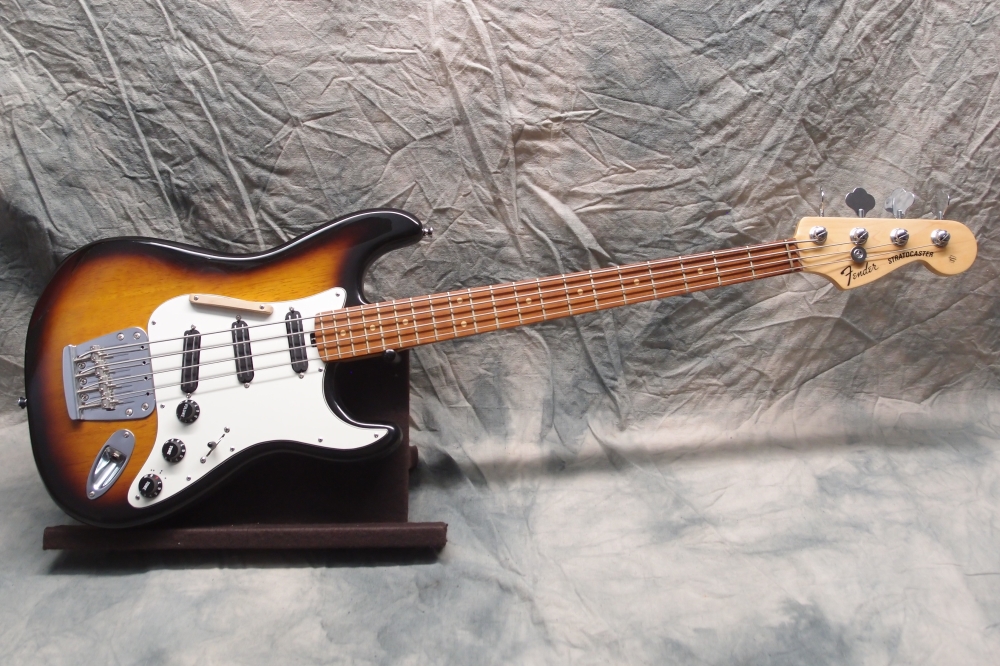
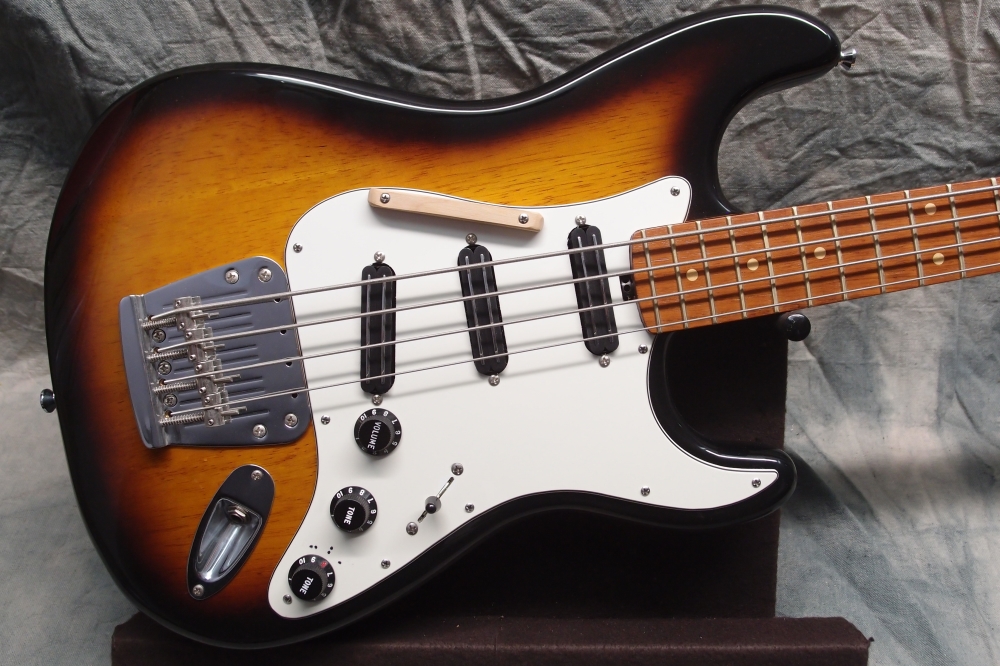
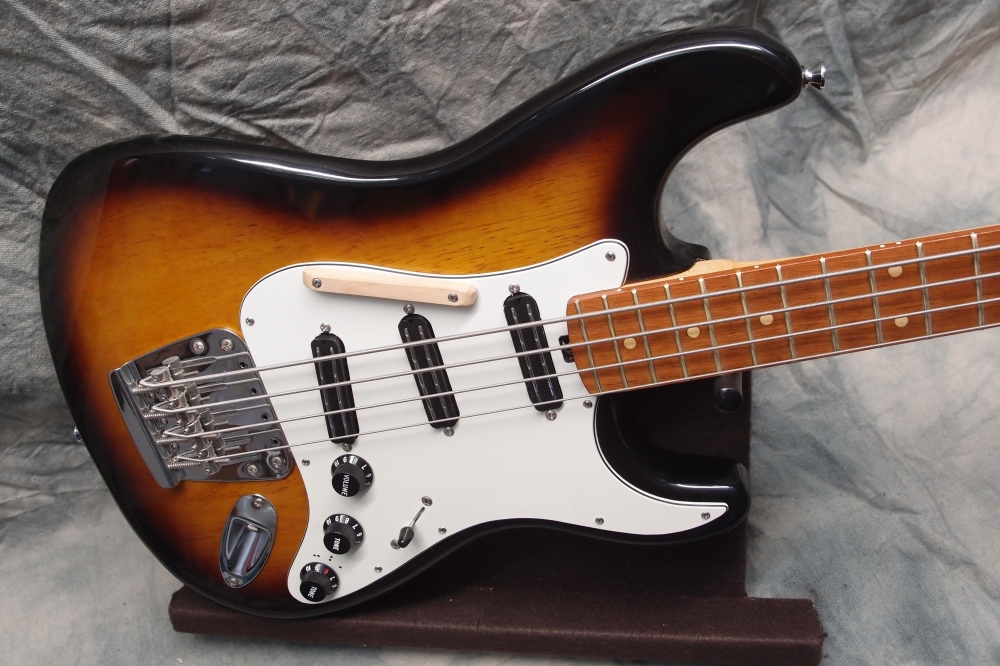
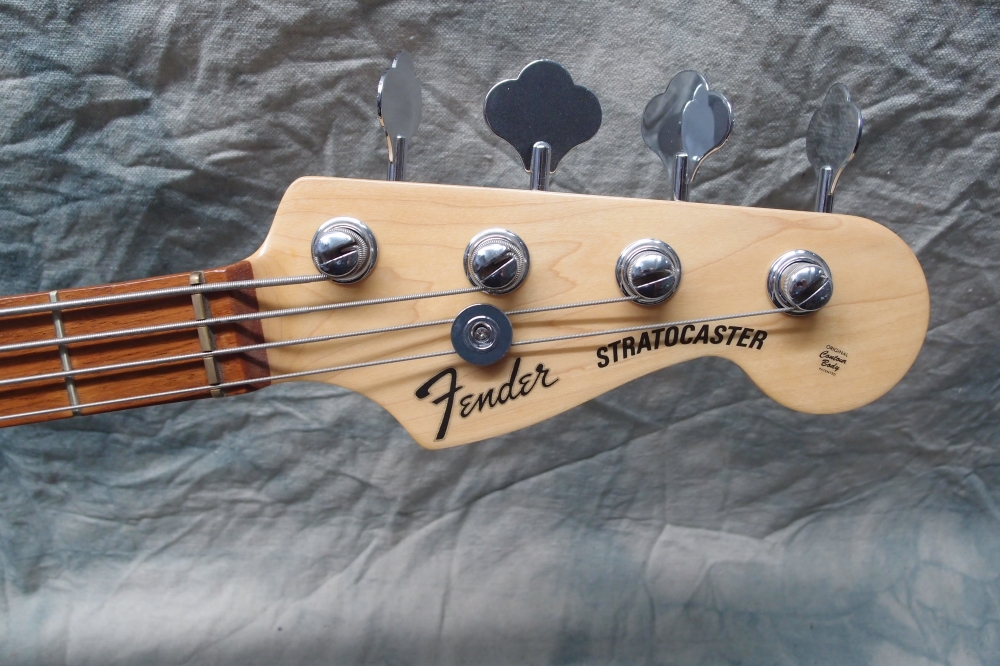
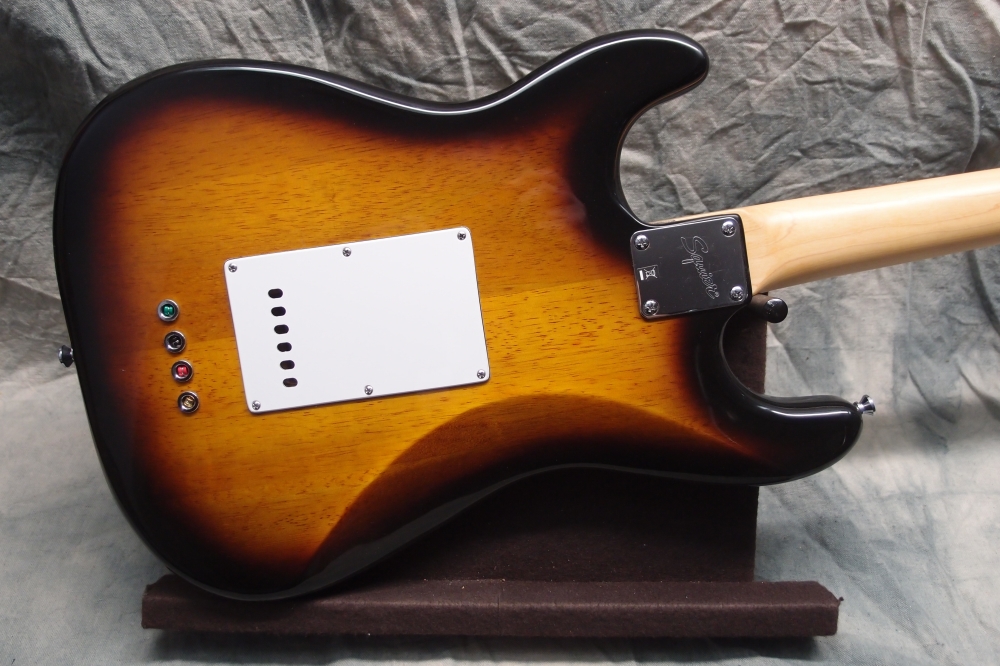

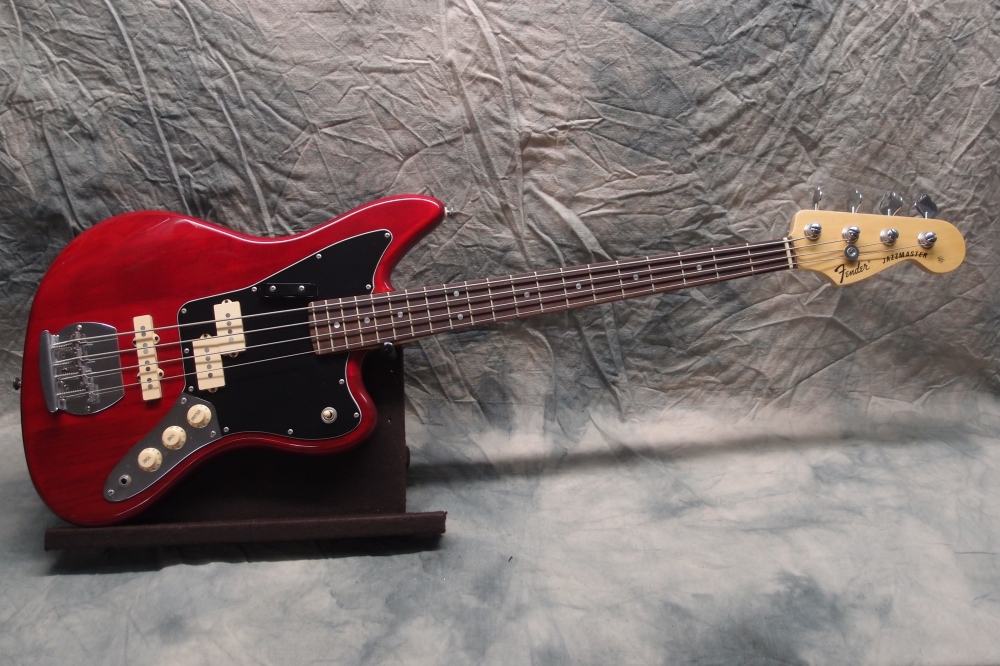
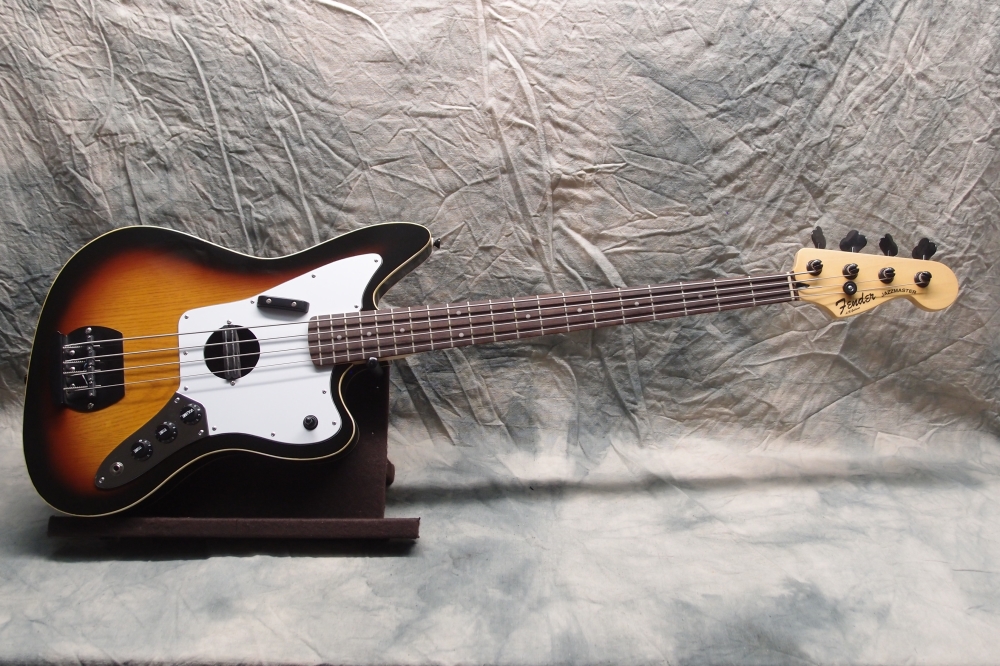
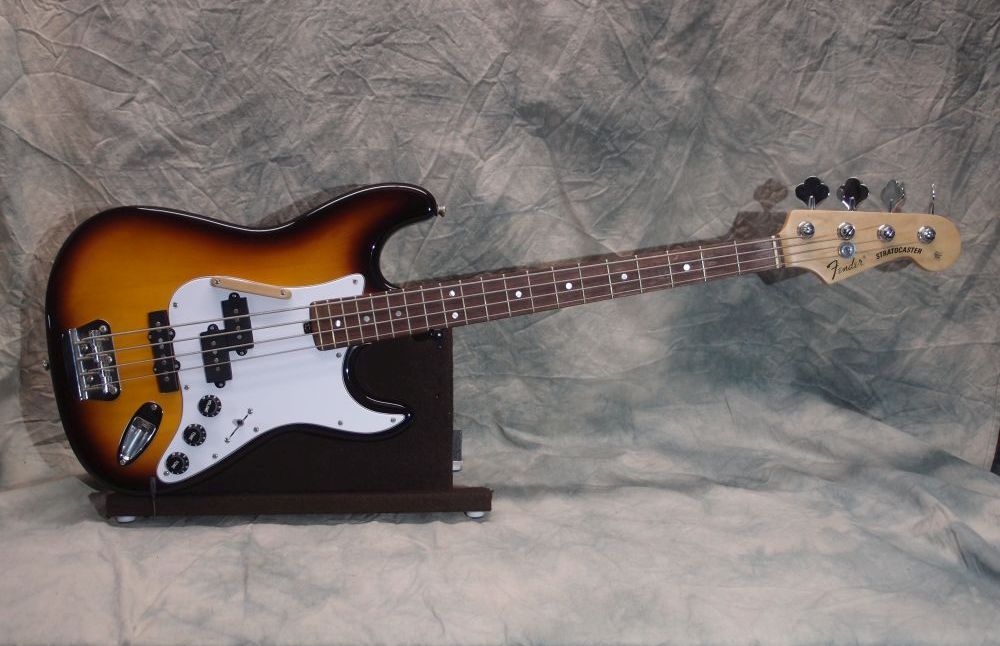
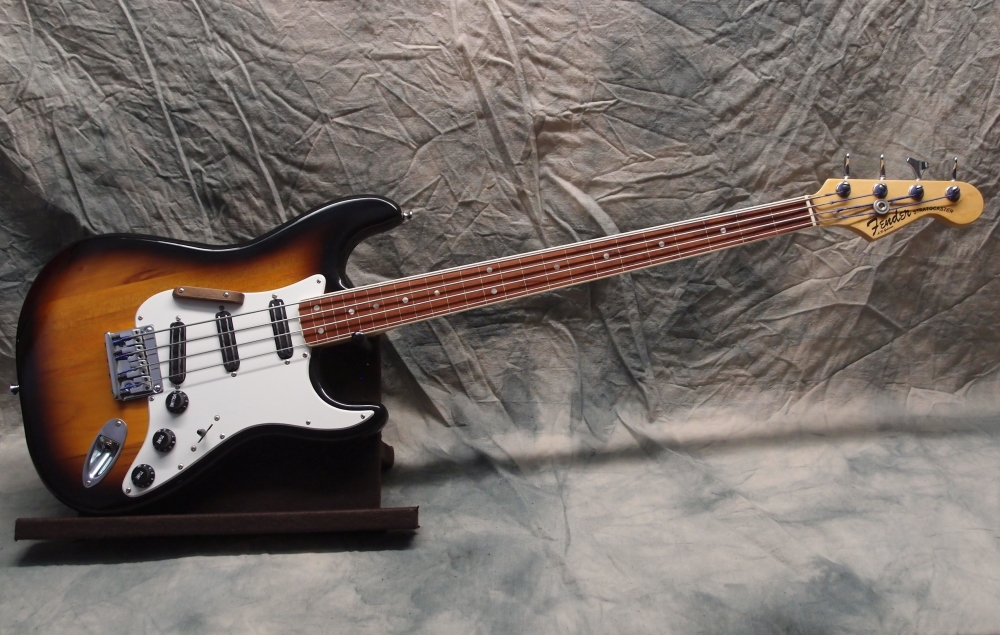
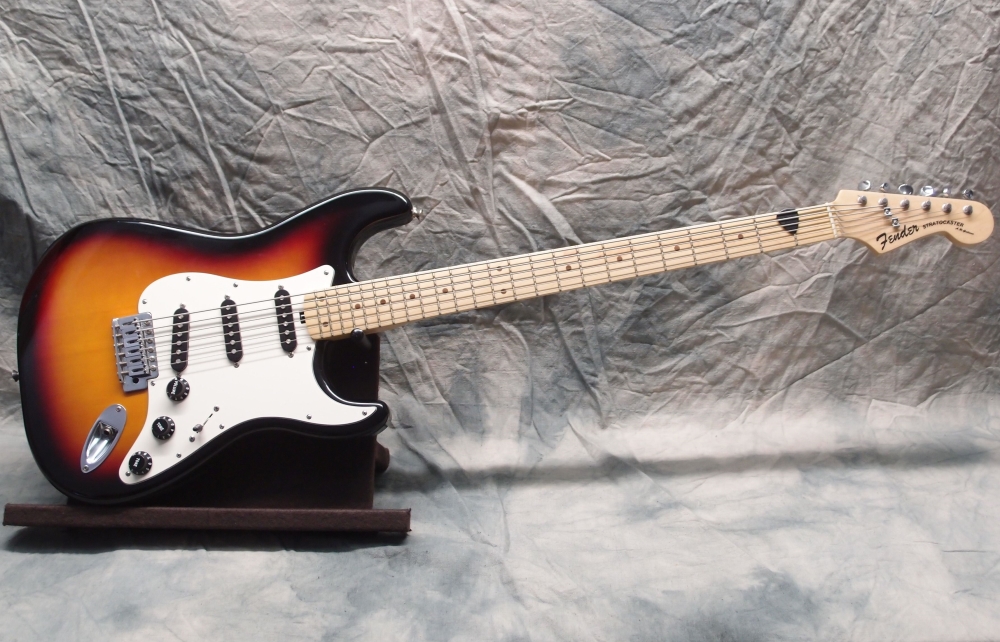
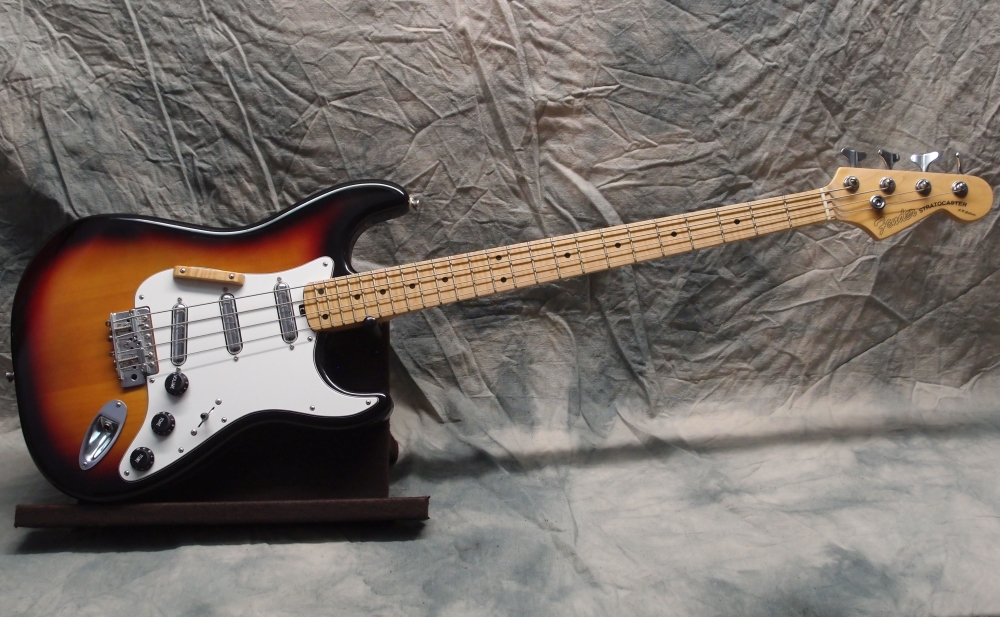
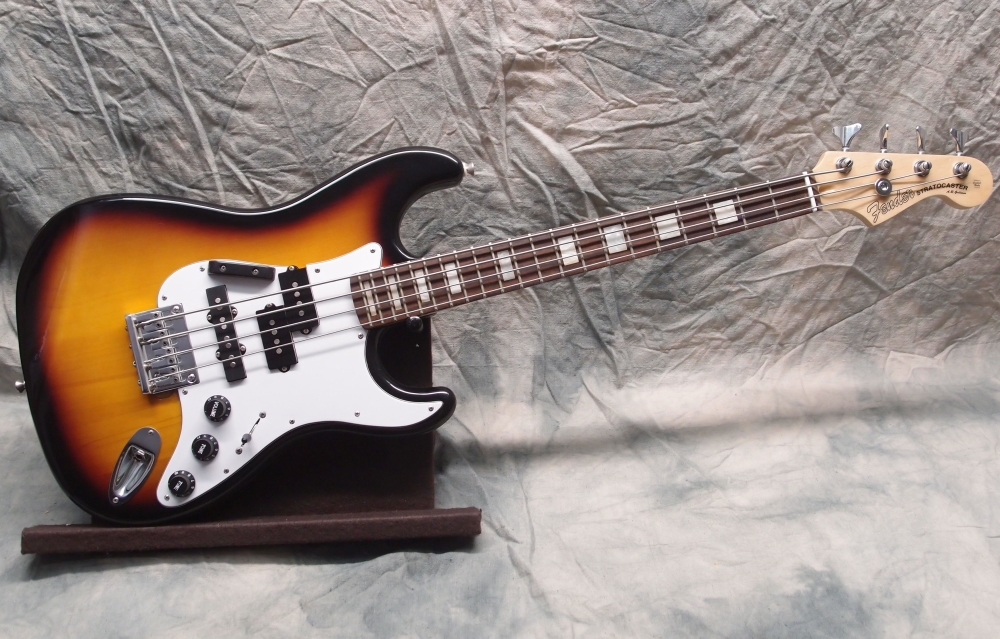
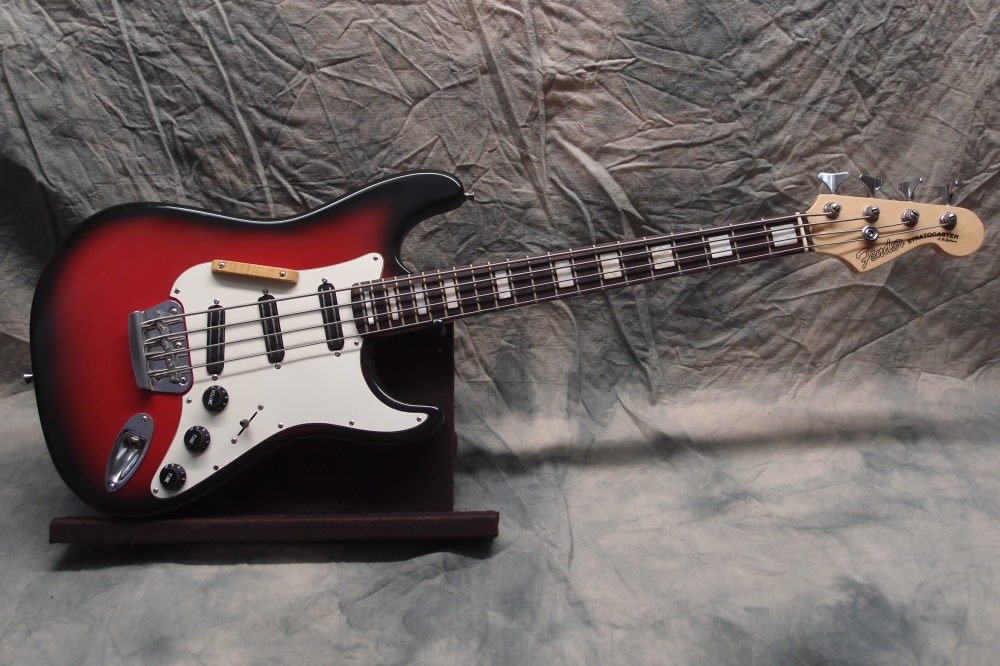
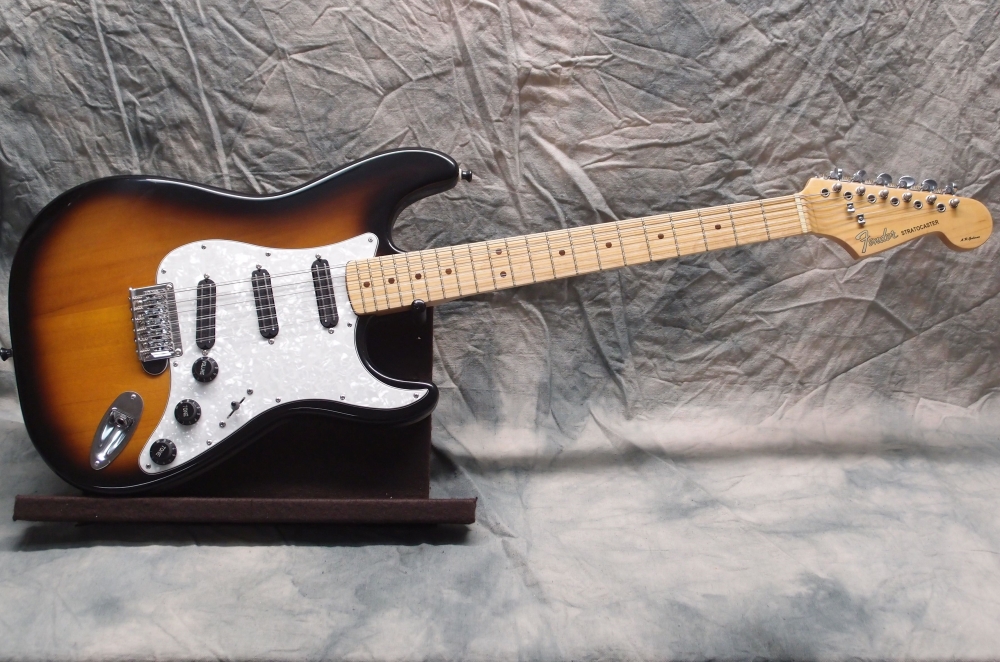
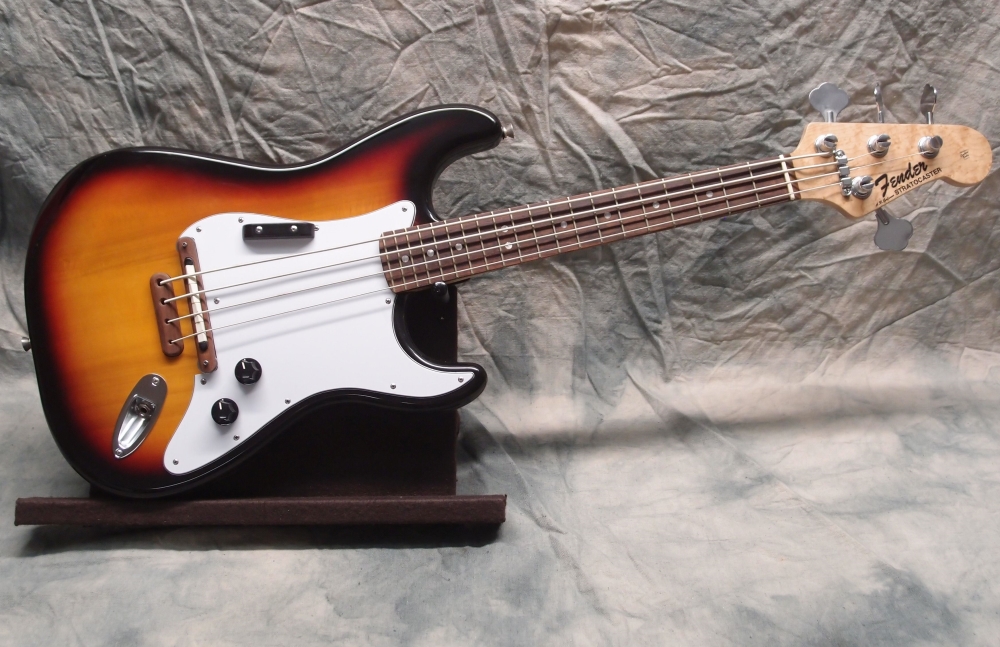
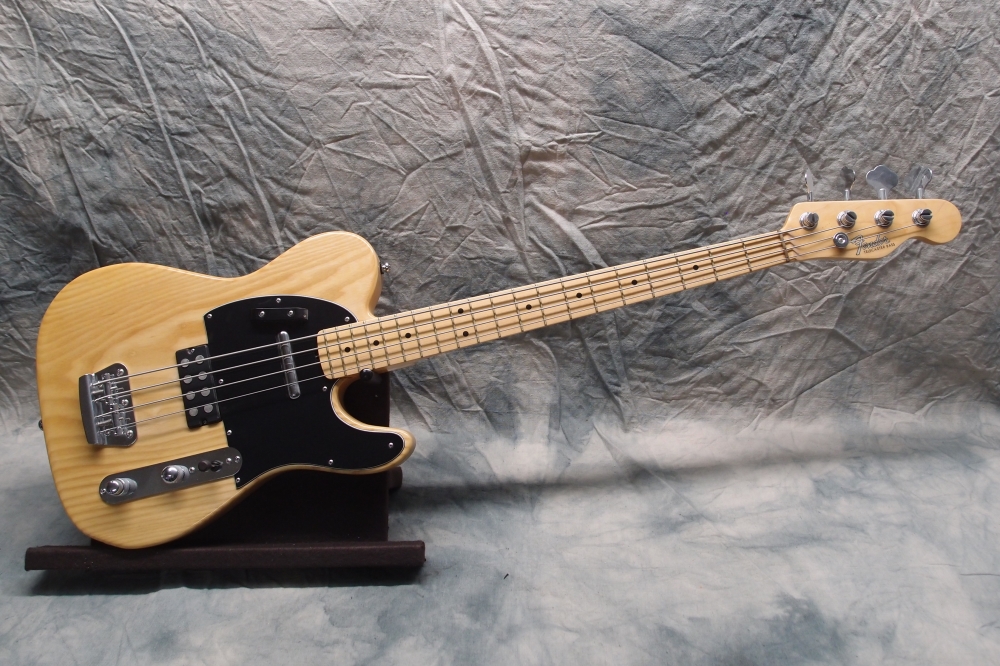
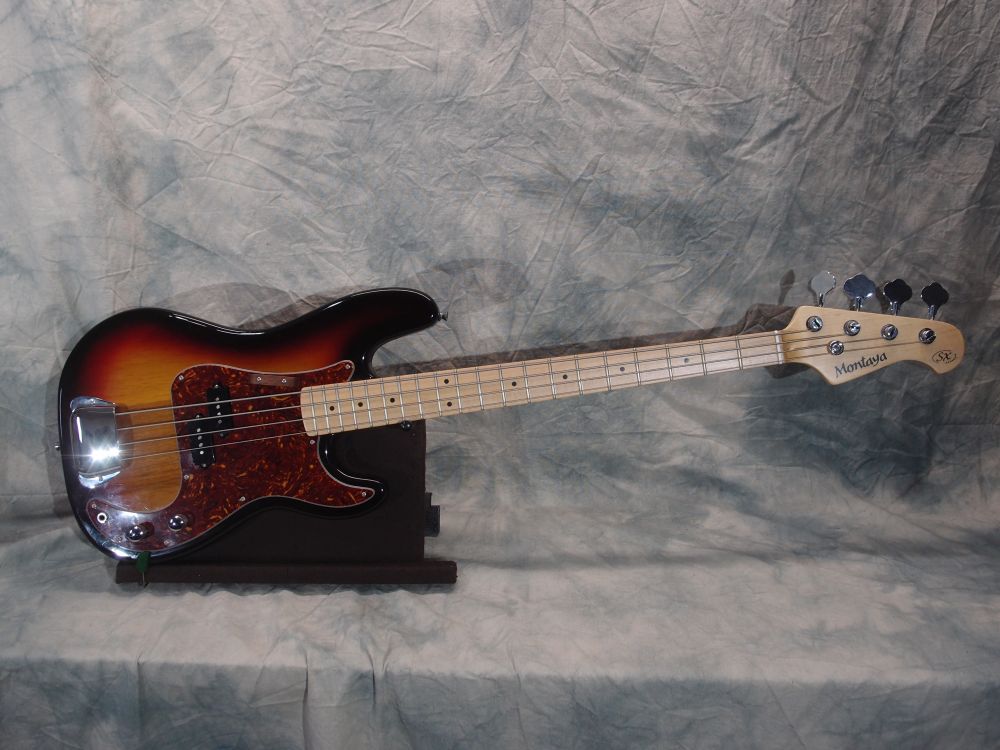
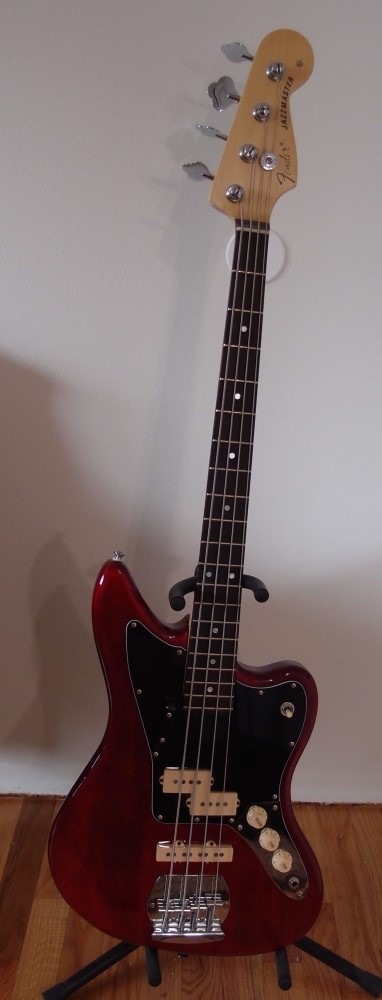
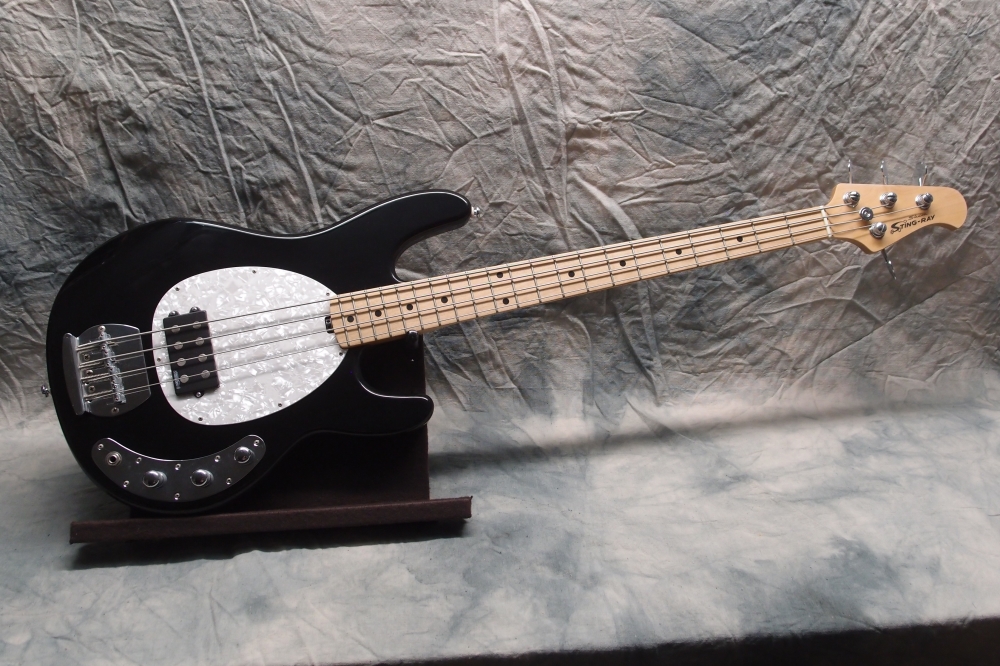
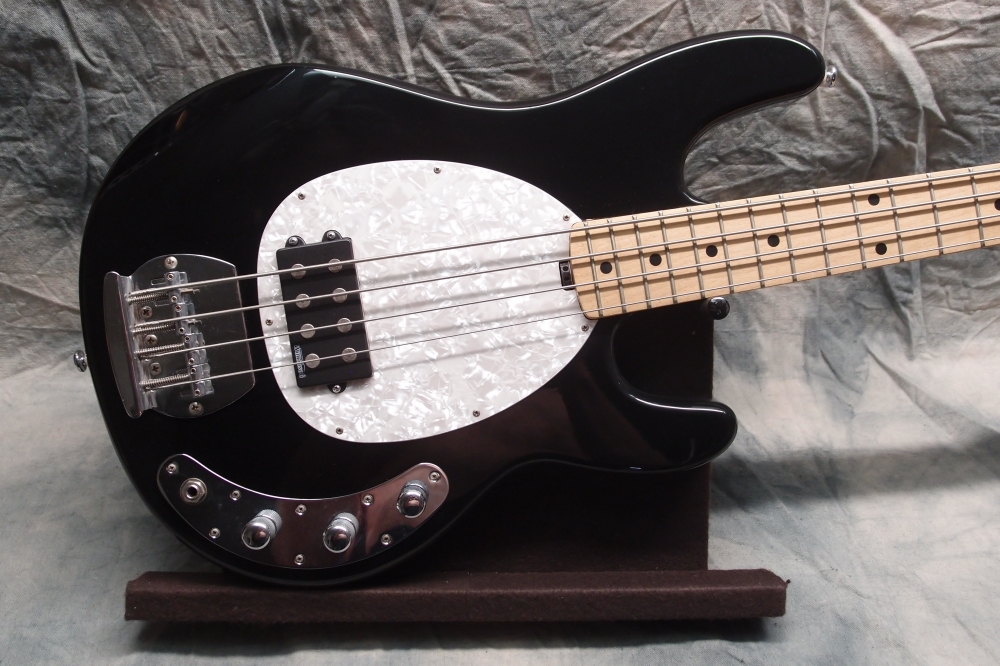
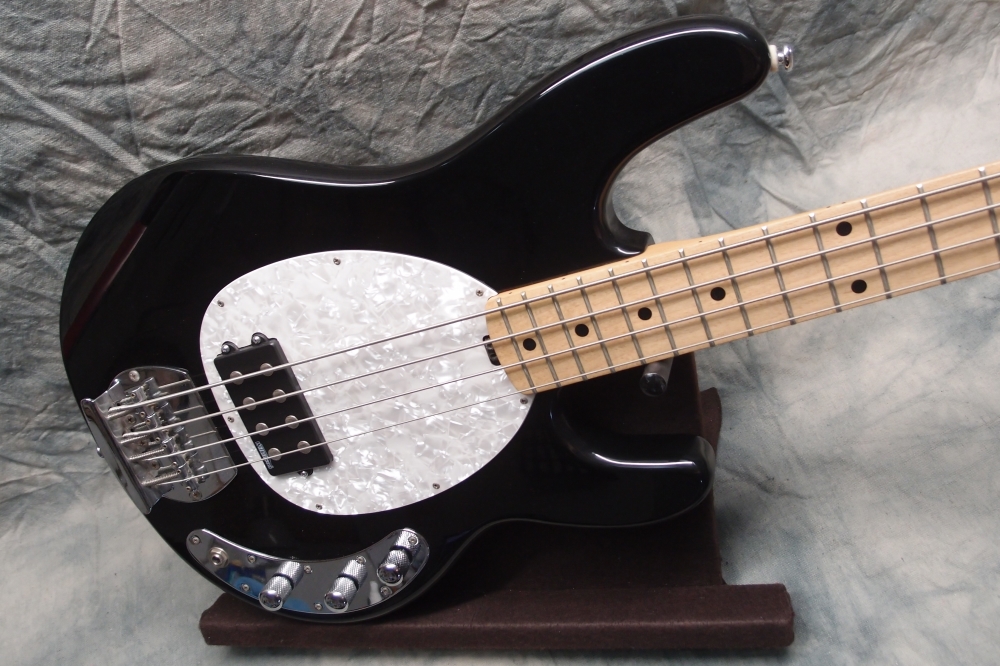
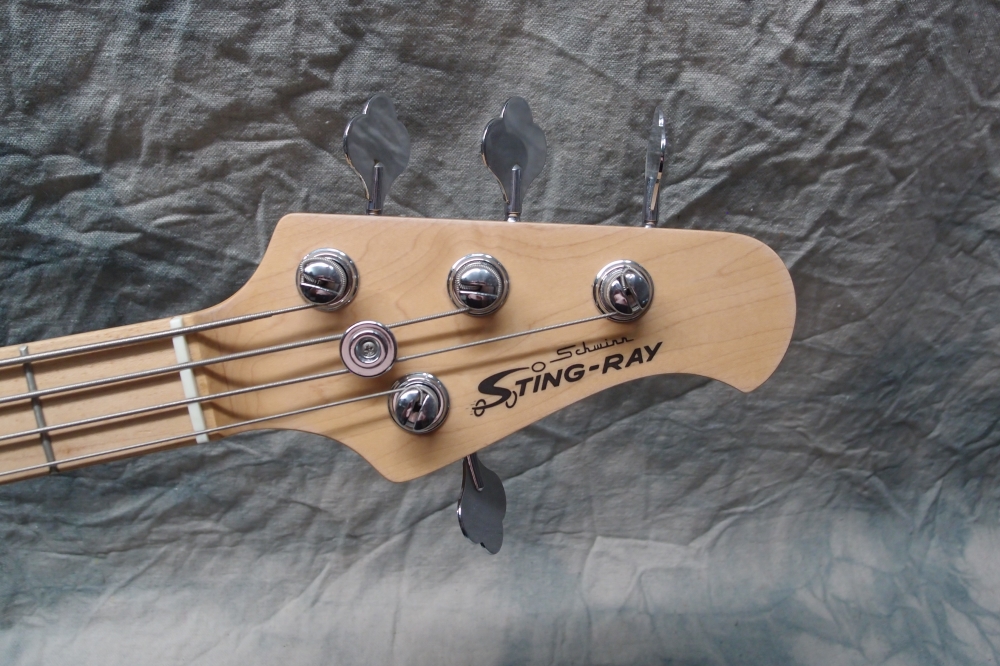
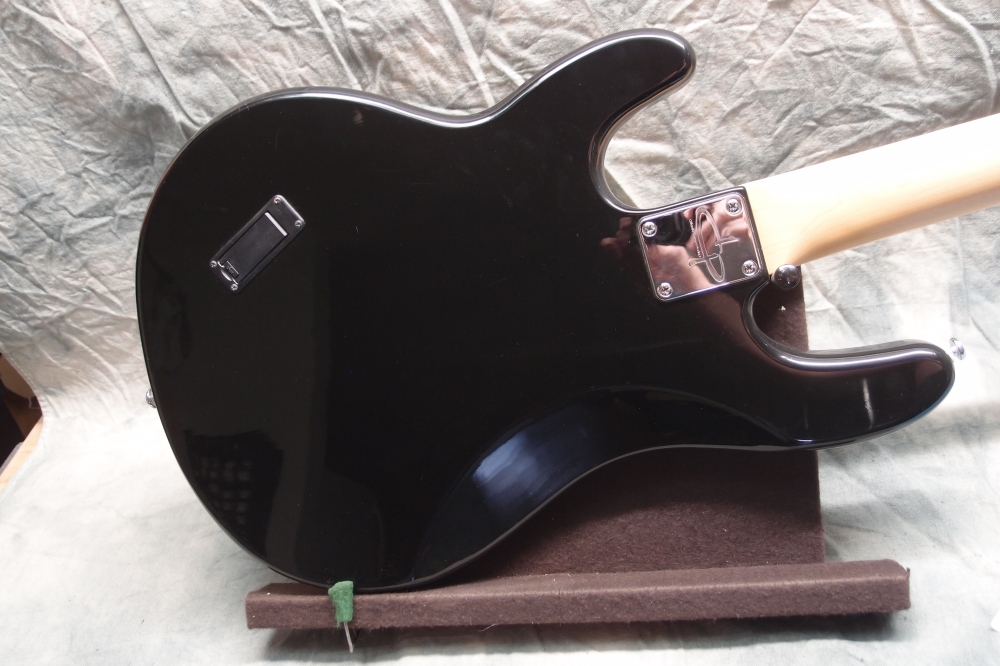
Questions or Inquiries?
Just want to say Hello? Sign the .